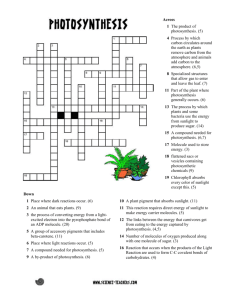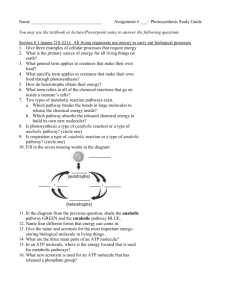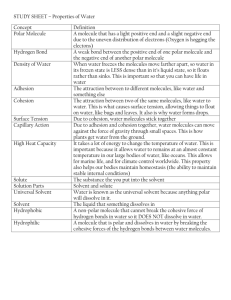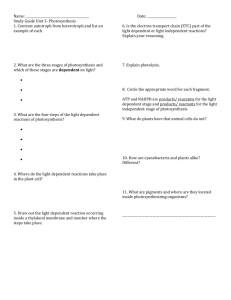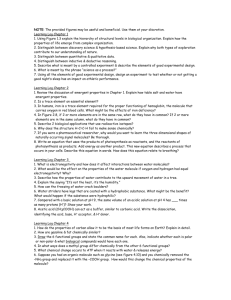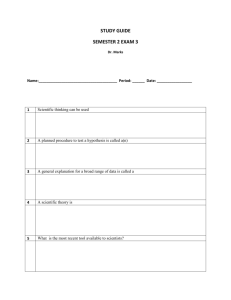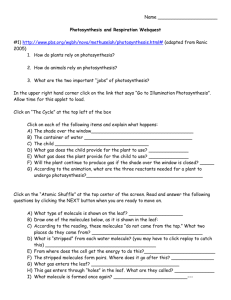Photosyntheis and Respiration Webquest
advertisement
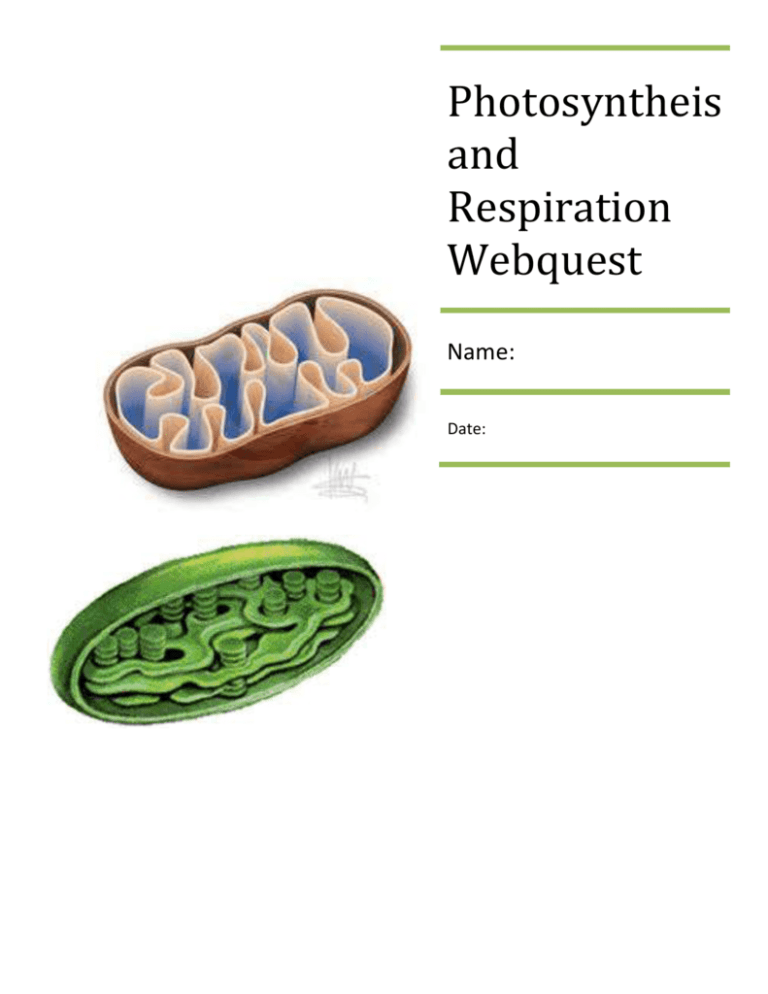
Photosyntheis and Respiration Webquest Name: Date: Follow each of the links to use the appropriate webpages to answer the questions. #1) http://www.pbs.org/wgbh/nova/methuselah/photosynthesis.html# (adapted from Ranic 2005) 1. How do plants rely on photosynthesis? 2. How do animals rely on photosynthesis? Next to the image of glucose in the green box, click on the link that says “Launch Interactive”. Allow time for this applet to load. Click on “The Cycle” at the top left of the box Click on each of the following items and explain what happens: A) The shade over the window____________________________________ B) The container of water ______________________________________ C) The child _________________________________ D) What gas does the child provide for the plant to use? ______________ E) What gas does the plant provide for the child to use? ______________ F) Will the plant continue to produce gas if the shade over the window is closed? _____ G) According to the animation, what are the three reactants needed for a plant to undergo photosynthesis?_________________________________________ Click on the “Atomic Shuffle” at the top center of the screen. Read and answer the following questions by clicking the NEXT button when you are ready to move on. A) What type of molecule is shown on the leaf? ___________________ B) Draw one of the molecules, as it is shown in the leaf: C) According to the reading, these molecules “do not come from the tap.” What two places do they come from? _______________________________________ D) What is “stripped” from each water molecule? (you may have to click replay to catch this) _______________________________________ E) From where does the cell get the energy to do this?_________________________ F) The stripped molecules form pairs. Where does it go after this? _______________ G) What gas enters the leaf? _______________________________ H) A molecule is formed (a super sweet one…) Draw this molecule as shown: I) What is the name of this molecule? ________________________ Click on “Three Puzzlers” at the top right of the screen. Go through each scenario, try to guess the answer and explain the right answers below in your own words. a) Can a tree produce enough oxygen to keep a person alive? Explain b) Can a plant stay alive without light? Explain c) Can a plant survive without oxygen? Explain #2) http://www.phschool.com/science/biology_place/biocoach/photosynth/overview.html 1) What is the definition of photosynthesis? 2) What is the driving force of photosynthesis? 3) What is the equation for photosynthesis? 4) Photosynthesis transfers electrons from water to carbon dioxide molecules. Why is this electron transfer called an oxidation reduction process? #3) http://www.johnkyrk.com/photosynthesis.html - In the lower left corner of the screen, click the forward arrow button with your mouse to answer the following questions: 1) What is the importance of chlorophyll? 2) What organelle is chlorophyll found in? 3) What is the name of the energy currency found in a cell? 4) Where does the bulk of atmospheric oxygen come from? #4) http://www.wiley.com/legacy/college/boyer/0470003790/animations/photosynthesis/photosyn thesis.htm - Click on the following labels and answer the corresponding questions to follow: LABEL (Strategy/Players) 1. What two phases can photosynthesis be broken down into? LABEL (Light Reaction) 1. What starts the chain reaction in the LIGHT reaction phase of photosynthesis? 2. What are the group of pigments in the thylakoid called? 3. In one sentence, what do these pigments do? LABEL (Dark Reaction) 1. What is the name of the cycle that converts inorganic carbon dioxide into a carbohydrate molecule a plant can use? 2. Is sun needed for this part of photosynthesis? #5) http://www.biologyinmotion.com/atp/index.html 1) How do living things mainly store energy (what form is the energy in)? 2) What does ATP stand for? 3) What is ATP often thought of as a rechargeable battery? 4) What happens when a ADP molecule gains a phosphate? 5) What happens when a ATP loses a phosphate? 6) How do humans “recharge” their batteries? 7) Click the Right arrow on the bottom left of the corner. When we eat large food molecules what happens to them first in our body? 8) In the diagram on the right, read the instructions on the left and describe to me what you had to manipulate in order to get a full “synthesis” to occur? #6 http://highered.mcgrawhill.com/sites/0072507470/student_view0/chapter25/animation__how_glycolysis_works.html 1) What is the main reactant for glycolysis? 2) What is the products of glycolysis? 3) What molecule is required for aerobic conditions? (Not on slide, think!) 4) What happens if there are anaerobic conditions, what is pyruvate converted into? (Aka the source of sore muscles!) #7 http://highered.mcgrawhill.com/sites/0072507470/student_view0/chapter25/animation__how_the_krebs_cycle_work s__quiz_2_.html 1) What waste does pyruvate give off as it enters the mitochondrion? 2) What is left behind in the mitochondrion as the pyruvate breaks down? 3) What carrier does this molecule attach to? 4) What set of reactions is this molecule deposited into? 5) What waste is created from this cycle? 6) What energy carriers are formed in this cycle?

